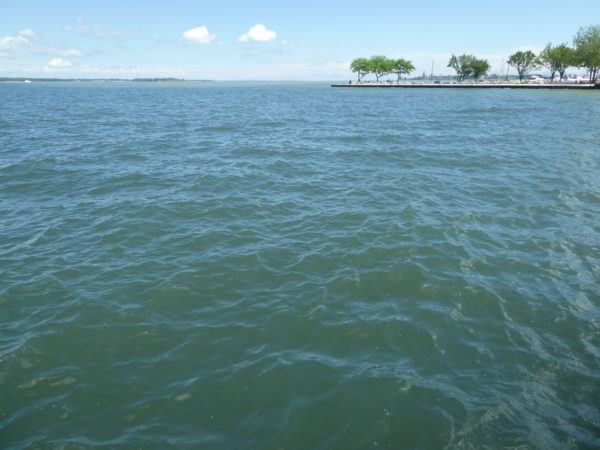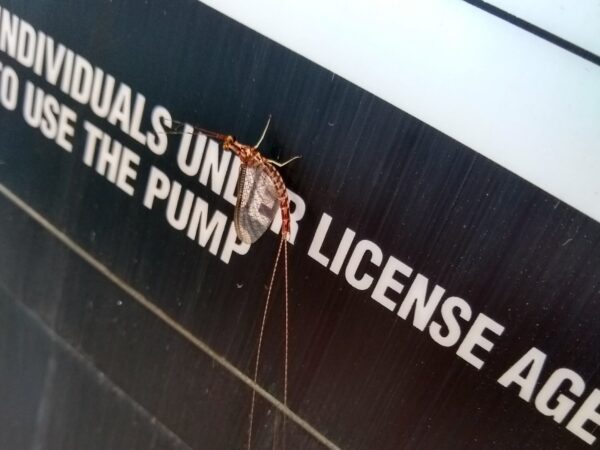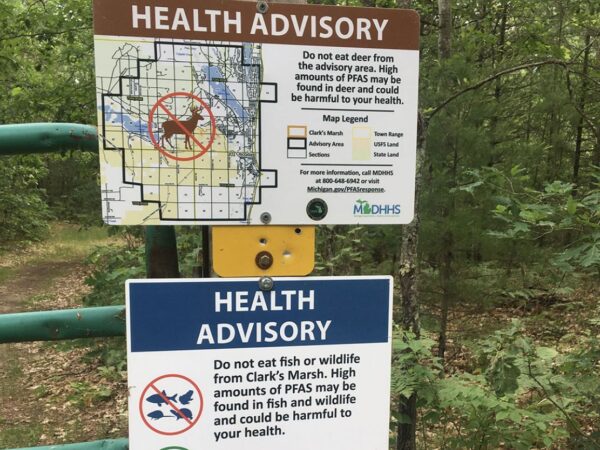
By Brett Walton, Circle of Blue
The Great Lakes News Collaborative includes Bridge Michigan; Circle of Blue; Great Lakes Now at Detroit Public Television; and Michigan Radio, Michigan’s NPR News Leader; who work together to bring audiences news and information about the impact of climate change, pollution, and aging infrastructure on the Great Lakes and drinking water. This independent journalism is supported by the Charles Stewart Mott Foundation. Find all the work HERE.
The Army Corps of Engineers finalized a rule on January 4 that further retracts federal protections for the nation’s smallest streams.
The revisions to the nationwide permits, which authorize the filling and dredging of waterways, are one of a flurry of environmental deregulatory actions federal agencies are taking in the final days of the Trump administration, even though there is the possibility with a Democratic Congress that the Biden administration will reverse them.
In the last week, the U.S. Environmental Protection Agency restricted the use of scientific studies based on confidential health data as a basis for rulemaking; the U.S Fish and Wildlife Service loosened protections for migratory birds; and a federal council allowed mining permits to be fast-tracked under a law that was intended largely for transportation and infrastructure projects.
The nationwide permits are part of the Clean Water Act permitting process and are typically updated on a five-year cycle. But the Army Corps undertook the rulemaking two years early in response to President Trump’s order in 2017 to reduce regulatory burdens on energy development.
Laura Ziemer, the senior counsel and water policy adviser for Trout Unlimited, compared the revisions in the nationwide permits to the Trump administration’s recent trimming of the scope of the Clean Water Act.
In that rule, which was finalized last June with much fanfare, the U.S. Environmental Protection Agency and the Army Corps significantly reduced the number of wetlands and streams that are protected by the landmark law. The changes to the nationwide permits, which proceeded with far less publicity, will have a similar effect, Ziemer said.
“It essentially reduces or shrinks the scope of the Clean Water Act,” Ziemer told Circle of Blue.
Section 404 of the Clean Water Act authorizes the Army Corps to oversee permitting for actions that fill or dredge waterways. Nationwide permits, intended for “minor” actions, are issued for projects that are expected to do minimal environmental damage to streams and wetlands. Individual permits are used when a project could cause significant environmental damage and requires a deeper analysis plus more public consultation.
There are 58 categories of nationwide permit that encompass all manner of development: from boat ramps and irrigation ditches to coal mines and pipelines. If construction does less damage to the streams than the thresholds in the permit, then the project does not have to go through the in-depth assessment of an individual permit.
The biggest change for streams in the rule change was shifting from a damage threshold based on length to one based on area. Before, projects eligible for a nationwide permit could not destroy more than 300 linear feet of stream. Now for 10 of the nationwide permits — including agricultural activities, mining, and commercial and residential developments — the standard is 0.5 acres.
Ziemer and others who submitted comments to the Corps are most concerned about the consequences for small headwater streams that are especially important for watershed health. Because an area-based threshold combines both the length of a stream and its width, small streams are now more vulnerable to development than they were in the past.
Damaging 0.5 acres of stream bed for a stream that is 6 feet across means allowing nearly 3,500 linear feet of the stream to be damaged — more than 10 times the previous limit and roughly two-thirds of a mile in length.
Trout Unlimited was one of many groups that objected to removal of the 300-foot provision. Other objectors included the South Carolina Department of Natural Resources and the Minnesota hunting and fishing group Sportsmen for the Boundary Waters.
The changes “can be devastating to clean water in this country,” Adam Williams, president of Brushy Fork Environmental Consulting, which restores ecosystems in the southern Appalachian region, wrote in a comment on the draft version of the rule.
The Corps justified the replacement of the 300-foot provision by arguing that using a 0.5-acre standard instead will make for a more-efficient permitting process. It also argued that the district engineers who write the permits can ask for more stringent protections on a case-by-case basis.
Ziemer countered that the changes go too far and that workloads for district staff are too large for them to take on more.
According to the Corps, about 95 percent of all dredge-and-fill permits are nationwide permits. “There’s nothing in the rule and its justification that made the case why that number has to be more than that,” Ziemer said.
The rule may be short-lived, though. The incoming Biden administration and the Democrat-controlled Congress will have several options for reviewing it and other last-minute rules changes, according to Duncan Greene, a partner at the law firm Van Ness Feldman.
“There are a lot of scenarios for how this could play out,” Greene told Circle of Blue.
After taking office, the administration will likely freeze any rules that were finalized but have not yet come into effect and delay their implementation, Greene said. This is standard procedure following a transfer of power. The changes to the nationwide permits go into effect 60 days after they are published in the Federal Register, which has not yet happened.
The Congressional Review Act could also come into play. The CRA allows Congress to review and repeal any rules that were approved near the end of the previous administration. The Trump administration used the CRA to repeal 16 Obama-era rules. Some Democrats have indicated that they plan to proceed with CRA review once Biden is inaugurated. Others are being more cautious about wielding the tool.
If the rule does take effect, it will likely be challenged in court, Greene said. The current nationwide permit that deals with oil pipelines is the target of a lawsuit that claims it is not protective of endangered species.
Catch more news on Great Lakes Now:
Overlooked: Small streams can have a big impact on Great Lakes water quality
In Perpetuity: Toxic Great Lakes sites will require attention for generations to come
Trump administration rule ends prosecuting industry for unintentionally killing birds
Lack of Enforcement: Less compliance with environmental laws means more pollution in the lakes
Your Federal Tax Dollars: How they are funding the Great Lakes Restoration Initiative
API key not valid. Please pass a valid API key.Featured image: The Clemons Fork in Breathitt County, Kentucky. (Photo courtesy of Flickr/Creative Commons user U.S. Fish and Wildlife Service)




